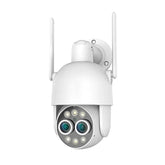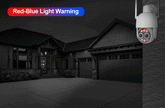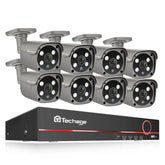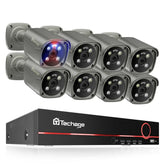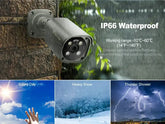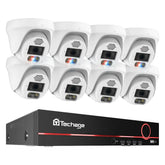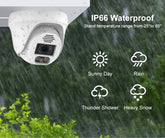IP Cameras in Healthcare Facilities: Enhancing Patient and Staff Safety
In healthcare settings, ensuring the safety and security of patients and staff is of utmost importance. IP cameras have emerged as valuable tools for healthcare institutions, providing surveillance capabilities that enhance overall safety measures. By deploying IP camera systems, healthcare facilities can monitor critical areas, deter potential threats, and respond promptly to incidents, thereby creating a secure environment for patients, visitors, and employees. This article explores the role of IP cameras in healthcare institutions and their contribution to improving patient and staff safety.
Monitoring Critical Areas:
IP cameras enable healthcare facilities to monitor critical areas, such as entrances, waiting rooms, hallways, and parking lots. By strategically placing cameras in these locations, institutions can effectively track movements, identify potential security risks, and respond promptly to any suspicious activities. Monitoring critical areas helps prevent unauthorized access, detect potential threats, and ensure the overall safety of patients, visitors, and staff.
Prevention of Violence and Theft:
Healthcare institutions are not immune to violence or theft incidents. IP cameras act as a deterrent against such incidents by creating a visible security presence. The mere presence of cameras can discourage potential aggressors and reduce the likelihood of violent or criminal behavior. In case of any untoward incidents, IP cameras provide valuable video evidence that can aid in investigations, identify perpetrators, and facilitate law enforcement actions.
Preventing Unauthorized Access:
IP cameras help prevent unauthorized access to restricted areas within healthcare facilities. By strategically positioning cameras at entrances, corridors, and sensitive locations, healthcare administrators can monitor access points in real-time, ensuring that only authorized personnel are allowed entry. This enhances the overall security of the facility and protects patient privacy.
Monitoring Patient Safety:
IP cameras aid in monitoring patient safety, particularly in critical care units, intensive care units, and psychiatric wards. With continuous video surveillance, healthcare providers can promptly identify potential patient risks, such as falls or self-harm incidents. Prompt intervention can be initiated, ensuring timely assistance and minimizing adverse events. IP cameras also facilitate remote patient monitoring, allowing healthcare professionals to keep a close eye on patients even from a distance.
Enhancing Emergency Response:
In emergencies, IP cameras play a crucial role in facilitating rapid response and providing situational awareness. By providing real-time video feeds, cameras assist security personnel in assessing the situation and responding appropriately. They enable quick identification of potential threats, such as unauthorized individuals or suspicious packages, allowing staff to take immediate action. Moreover, IP cameras can be integrated with emergency notification systems to alert authorities and staff during critical situations, ensuring a swift and coordinated response.
Staff Protection and Support:
Healthcare staff members often face challenging situations in their daily work, including dealing with difficult patients or handling volatile situations. IP cameras can provide an added layer of protection for staff by capturing video evidence of any incidents or confrontations. This evidence can be used to support staff in cases of disputes or allegations, ensuring fairness and accountability. Additionally, IP cameras contribute to a safer work environment, allowing staff to focus on delivering quality care without compromising their own safety.
Combating Workplace Violence:
Healthcare settings can be prone to incidents of workplace violence. IP cameras act as a deterrent, discouraging aggressive behavior and providing evidence in case of any untoward incidents. They can be placed in high-risk areas, such as emergency rooms or psychiatric units, to ensure the safety of both patients and staff. Video footage can be utilized for investigations, staff training, and implementing measures to prevent future incidents.
Patient Safety and Privacy:
IP cameras in healthcare settings must strike a balance between patient safety and privacy. While cameras enhance security, it is crucial to respect patient privacy and comply with applicable regulations, such as HIPAA (Health Insurance Portability and Accountability Act). Healthcare institutions should clearly communicate camera usage and privacy policies to patients and visitors, ensuring transparency and trust. Anonymization techniques, such as blurring or masking, can be applied to video footage to protect patient privacy while still maintaining a level of surveillance effectiveness.
Visitor Management and Access Control:
IP cameras assist healthcare facilities in managing visitor access and ensuring a secure environment. Integrated with access control systems, cameras can capture images or videos of visitors, allowing staff to verify identities and grant appropriate access permissions. This helps prevent unauthorized access to restricted areas, protects sensitive information, and enhances overall facility security. Furthermore, IP cameras can monitor visitor traffic, providing data that can be analyzed to optimize visitor flow and improve overall facility operations.
Compliance with Regulatory Standards:
Healthcare institutions must adhere to various regulatory standards and guidelines, including those related to security and privacy. IP camera systems should comply with relevant regulations, such as HIPAA and local data protection laws. This includes securing video data, controlling access to footage, and implementing appropriate retention periods. By ensuring compliance with regulatory standards, healthcare facilities demonstrate their commitment to patient and staff safety while maintaining ethical and legal practices.
Training and Awareness:
Effective utilization of IP camera systems
requires proper training and awareness among healthcare staff. Training programs should educate staff on camera usage, privacy considerations, and response protocols. Staff members should understand how to access and utilize camera footage, as well as the importance of confidentiality and discretion when handling sensitive information. Regular awareness campaigns can reinforce the role of IP cameras in ensuring safety and security, fostering a culture of vigilance and accountability.
IP cameras have become integral to ensuring patient and staff safety in healthcare institutions. By monitoring critical areas, deterring violence and theft, enhancing emergency response, and supporting staff members, IP camera systems contribute to a secure healthcare environment. It is crucial for healthcare facilities to strike a balance between patient safety and privacy by adhering to regulatory standards and implementing appropriate anonymization techniques. With proper training and awareness, healthcare institutions can harness the power of IP cameras to create a safe and secure environment for patients, visitors, and staff, ultimately improving the overall healthcare experience.




